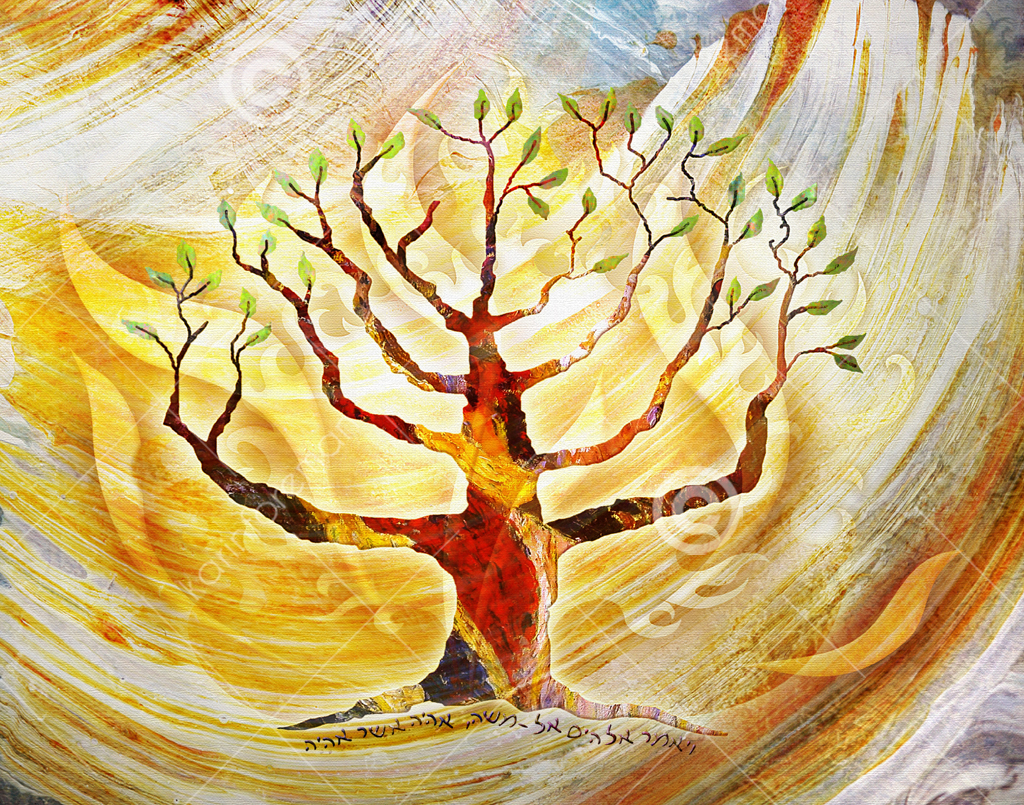I AM THAT I AM Mixed Media (Pencil and Acrylics)
The bush was hand-drawn with pencil and then filled in with heavy impasto strokes. It then was traced in Illustrator in order to create clean outlines and for adding the Hebrew type. The background is acrylic on canvas. All elements were layered in Photoshop for the final output.
I AM THAT I AM is taken from Exodus 3:14 when G-d said to Moshe “Ehyeh Asher Ehyeh” (אהיה אשר אהיה), which literally means “I Will Be What I Will Be.” It is one of the most famous verses in the Torah.
“I AM” is one of the Seven Names of G-d. “Ehyeh” is the first person singular imperfect form. Hayah means “existed” or “was” in Hebrew. Whether the Holy Name (יהוה) is derived from Eyheh or whether the two are individual concepts, is a subject of debate amongst historians and theologians. However, it stems from the Hebrew perception of monotheism that G-d exists by himself for himself. He is the uncreated Creator who is independent of any concept, force, or entity; therefore “I am who I am” (ongoing). It contains the truth that G-d alone IS. It expresses what he is—infinitely above everything that we can understand or say. “I AM” reveals a G-d who is always there.
The artwork depicts the scene when the angel of Adonai appeared to him in a fire blazing from the middle of a bush. Moshe looked and saw that although the bush was flaming with fire, yet the bush was not being burned up. This is the moment when Moshe had his life-altering and personal encounter with Adonai.
The bush is formed in the shape of a Hanukkiyah further alluding to the element of illumination by fire. A Hanukkah lamp contains a holder called the shamash which means “helper” or “servant”. It is used to light all other candles. I chose this imagery to link the idea that Adonai was using Moshe to ignite the rest of the Israelites—to light them on fire. Therefore they as well could experience the awesomeness of Adonai’s presence.
A kosher shamash must be offset on a higher or lower plane than the main eight candles or oil lamps—just as Moshe was G-d’s servant and on an higher spiritual level or separate from the rest of his people.
